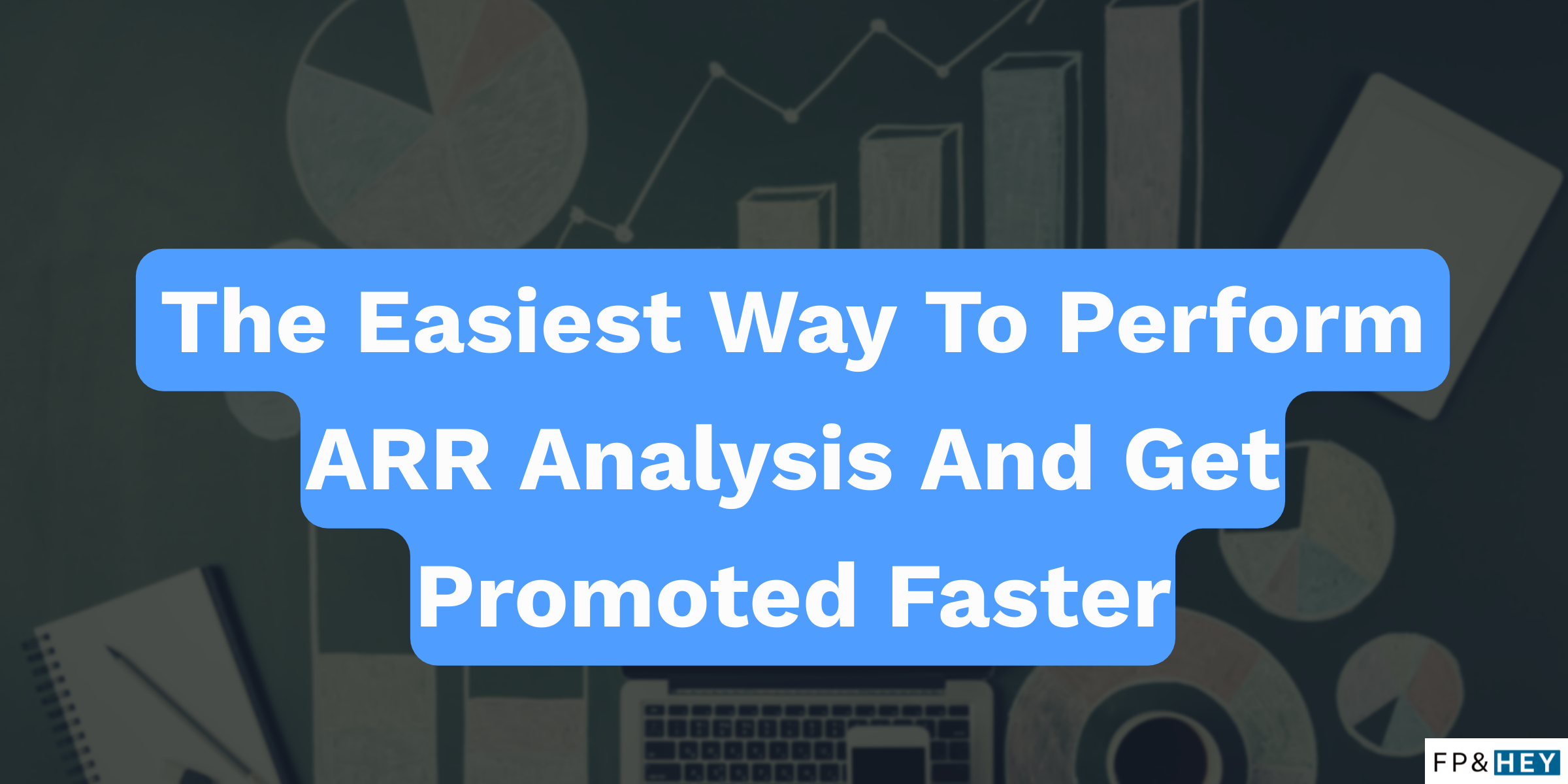👋Hey there,
Today’s post is on how perform ARR analysis and help you get promoted using it.
Our team used ARR to grow our company’s valuation from $500m to $5 billion in under 5 years.
Not only did ARR help our company grow, but by using ARR in our analysis we got promoted faster.
And guess what? It’s ridiculously easy to learn and use.
Let’s dive right in.
What you need
To start you’ll need your most up-to-date customer contracts. Specific items you’ll need from each contract are:
- Contract start and end date
- Product and/or services the customers is purchasing
- Amount customer is paying over the life of the agreement
Ideally, the above info would be organized in excel tables or a data warehouse every month (we call these data snapshots).
If that process doesn’t exist this is another BIG opportunity for you to get promoted faster by implementing an important process for reporting. 😉
Step 1: Determine what Services are Recurring
Recurring means the product is paid for in perpetuity as long as the customer is doing business with your company.
The beauty of recurring revenue is its PREDICTABLE cash flow. This is why companies like Apple no longer charge per song for i-Tunes, instead you pay a monthly subscription for access to all songs.
Think about your cable company, every month you pay (what seems like an insanely HIGH) fee to get access to cable, phone, and internet services. That’s recurring revenue.
Think about Microsoft Office 365, every month (or year) you pay a fee to get access to the amazing tool that is excel as well as countless other things they may offer. That’s recurring revenue.
Focusing on Microsoft, here are two ways recurring revenue could be billed on an invoice…
- $10 per user per month
- $100 per user per year (may get discount if paid upfront annually)
What’s NOT recurring are things like…
- Set up fees to get the customer or user up and running (they happen once)
- Offboarding fees when a customer terminates the deal (again they happen once)
- Adhoc training and implementation (you get the idea, this happens once or sporadically)
Step 2: Determine Customer Contract Length in Days
Contract terms can be monthly pay-as-you-go, annual, or even longer. We need to take each term and put them in the same ANNUAL terms. To do this
Annual term (aka 12-month term) = (End Date LESS Start Date)
Step 3: Use Algebra to Calculate ARR
Time to dust off what you learned in elementary school. 🙂
From Step 1 you know how much recurring revenue each customer has. From Step 2 you know how long you have it in days. Here’s the formula that brings it all together.
ARR = (Recurring Revenue / Contract Length in Days) X 365 Days in a Year
More ways ARR can fast-track your career
Here’s a few analysis you can do to fast-track your career…
- Customer Lifetime Value – how much are your customer relationships worth over their lifetime?
- Customer Profitability – how profitable are your customer relationships each year?
- White Space – what customers offer upsell opportunity?
The opportunities are endless!
Conclusion: You’re an ARR Master and made Yourself more Promotable
You can now calculate ARR, which not every company that has recurring revenue knows how to do.
And you now know what data to go after, how to massage that data to make it more useful, and the formula to pull it all together.
There are so many things you can do with this info to business partner, grow your business, and look GOOD (aka get promoted) by doing it.
How about you? How do you feel about ARR now?
Let us know and we’ll be sure to share your thoughts in our next posts!
Have fun making an impact on your business and your career.
Cheers,
Drew & Yarty
PS: This post is 100% human-made




